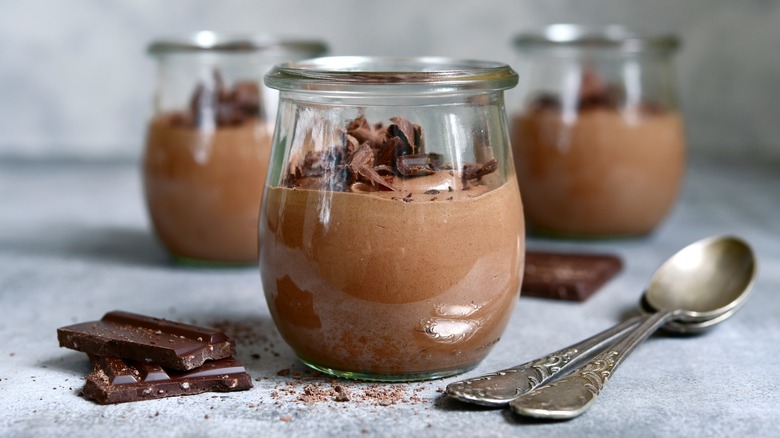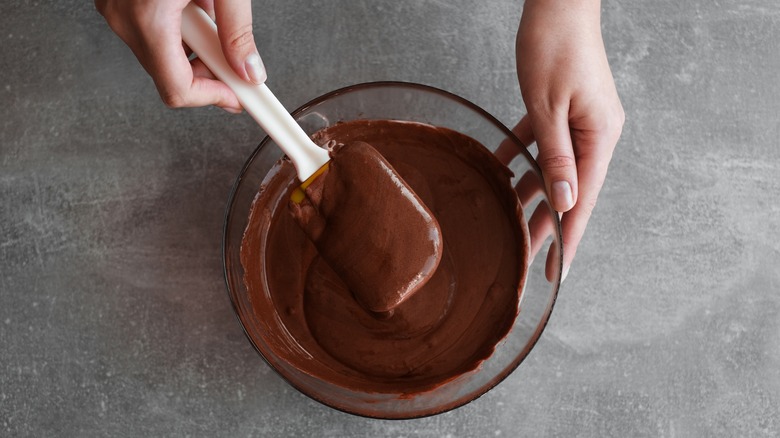The Trick To Preventing A Film From Forming On Mousse
Mousse is the light, airy, more sophisticated cousin to the classic pudding. There are plenty of differences between the two, but for a mousse in particular, one of the key qualities is its texture, which makes it a fancy treat while pudding is a more casual selection that's often found at the kids' table.
The big secret is that a good mousse doesn't take that much effort to make. Food52 points out that mousse can be as simple as two ingredients. These ingredients fall into the category of aerators and bases, but you have a few options to choose from each to suit your own tastes. For example, Alton Brown makes his mousse with eggs as his aerator and melted chocolate as his base.
Of course once you go through all the hard work of whipping up those egg whites you would hate for it all to go to waste. Cook's Illustrated says that one problem many first time mousse makers encounter (besides a runny mousse) is a skin forming on the surface layer after they've cooked the custard. This can lead to a thin film that will remain after other ingredients have been folded in.
Luckily, this problem can be easily prevented, and even solved when it does occur.
Place plastic wrap directly on the surface
According to Cook's Illustrated, this is a common problem among different custard and pudding dishes like mousse. This skin forms as the liquid on the surface of the mousse evaporates. So once the liquid is gone, all that's left is the dried out surface of your mousse. This won't affect its flavor, but it also won't make for a proper presentation.
The easiest way to prevent this is to keep the water from evaporating in the first place. MasterClass says to cover your custard with plastic wrap before folding in other ingredients and make sure that it is stuck to the surface of the mousse. Their recipe uses a custard base that needs to be refrigerated before other items can be added. It's important that while the custard is in the refrigerator it is covered in this manner to prevent dealing with the film later.
Cook's Illustrated says if this does occur you can simply put the custard through a fine mesh sieve to leave behind the dry film and carry on with the rest of your mousse preparation.

